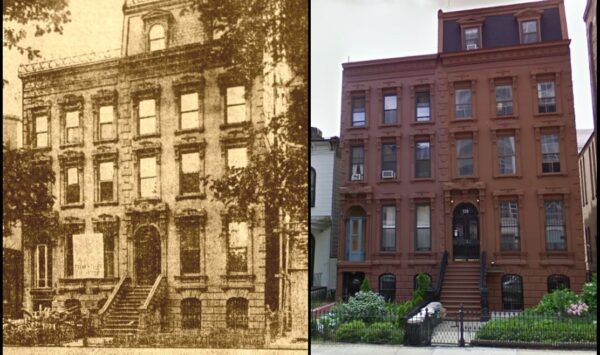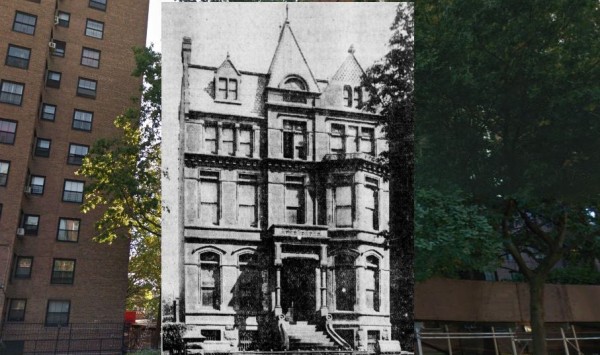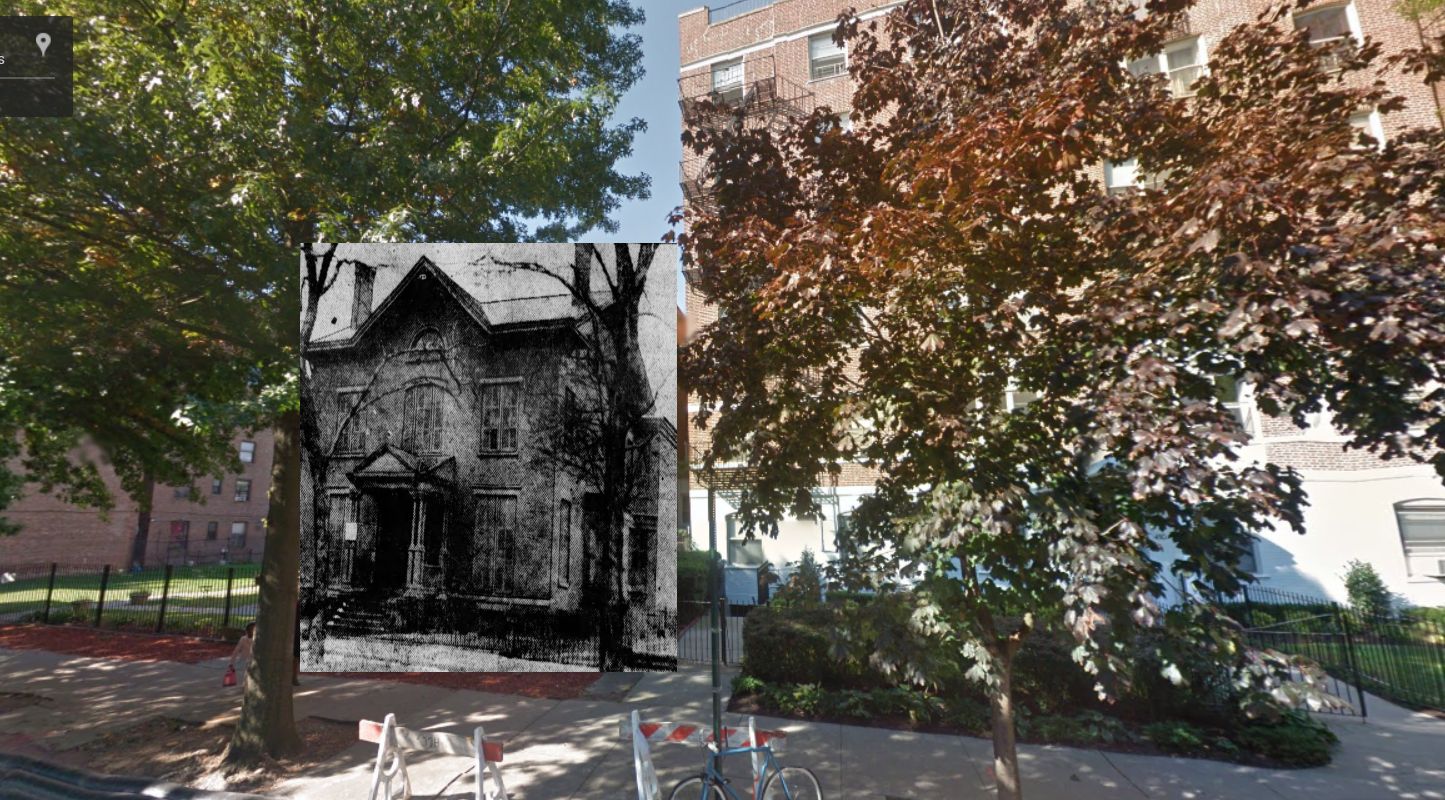HOW YOUR BROWNSTONE LOST ITS SOUL (1915)

******************************************************************************************************************************** Brownstone Detectives investigates the history of our clients’ homes. The story you are about to read was composed from research conducted in the course of one of those investigations. Do you know the history of YOUR house? ******************************************************************************************************************************** It started just 20 years after construction began on “Brownstone Brooklyn” – our brownstones and townhouses began to lose their “souls.” Constructed in a time when owners needed three and four stories of room for large families, they had, in those times, existed as the epitome of style and class. Now that so much square footage so close to the city center was becoming too dear for so many residents (who did not have families or who needed much less room), builders were beginning to construct large apartment houses that provided all of the necessities of home within a smaller, but more stylish and efficiently laid out, space. Such competition from newer construction caused the formerly beloved brownstone to lose its lucrative “soul.” THE SOLUTION TO ANTIQUITY In 1915, real estate broker Frank Tyler struck upon an idea that turned out to be, in essence, a paradigm change: Take an old inefficient brownstone and turn it into a stylish and updated apartment house. Tyler noticed that “the average three-story and basement dwelling of old-fashioned style” had “become a drag on the real estate market.” Because of “great changes that have taken place in construction, and the popularity of apartment house living,” brownstone owners had been experiencing a decline in the rental […]
A CURE FOR WEALTH ON CLINTON AVE (1895)

******************************************************************************************************************************** Brownstone Detectives investigates the history of our clients’ homes. The story you are about to read was composed from research conducted in the course of one of those investigations. Do you know the history of YOUR house? ******************************************************************************************************************************** Along an avenue shaded with tall oaks and plane trees once sat the home of a rich old recluse who’d been swindled of nearly all of her life’s savings in her declining years. A “tumble down” and “badly dilapidated old three story frame house,” the structure “stood forlornly upon the lot at 439 Clinton Avenue in Fort Greene,” noted the Brooklyn Daily Eagle. The roof of the house was “surmounted by a queer little cupola, and the whole structure looks as if it might fall in at any moment.” In short, the Eagle sardonically noted, the house looked as if the owner, Mrs. Caroline Barry, had lived in it ever since the death of her husband “without either painting it or repairing it in any way.” The Eagle was likely going a bit over the top with regards to the house’s condition, as it seemed much out of place situated between stately structures of brick and brownstone all along Clinton Avenue. But as the house has been gone for more than 100 years now, it is impossible to know what its actual state was for certain. What we do know, though, is what it looked like from a drawing done by the newspaper and from Sanborn Fire Insurance maps. From the […]
THE CLOCK HOUSE OF CLINTON HILL (1914)

******************************************************************************************************************************** Brownstone Detectives investigates the history of our clients’ homes. The story you are about to read was composed from research conducted in the course of one of those investigations. Do you know the history of YOUR house? ******************************************************************************************************************************** Nothing says “time’s a-wastin’” like the gift of a good clock. And that “tick-tick-tick” on the old mantel back in the day was a constant reminder that there were only a certain number of hours, minutes, and seconds within each day. And, more than anyone else, James Arthur knew it. A CLOCK, A CLOCK, MY KINGDOM FOR A CLOCK! James Arthur, a wealthy industrialist and owner of a machine works in Brooklyn, collected all manner of timepieces. He also fixed them, traded them, dreamt about them, and talked about them all day long – literally. He lectured on clocks, giving hundreds of speeches on timepieces in his lifetime. And as a rich Brooklynite he had a lot of that time on his hands. He traveled. He sought out clocks. He talked some more about clocks through interpreters in foreign lands. Then, at some point, he realized that he needed a home for all of those clocks. And with the number of clocks he owned, it would need to be a big one. No. 357 CLINTON AVENUE – THE CLOCK HOUSE In 1914, Arthur found that place. It wasn’t a new building, and it likely needed some work, but it was grand, had great presence, and – most importantly – it was […]
THE NAMING OF A CLINTON HILL HOUSE (1850)

******************************************************************************************************************************** Brownstone Detectives investigates the history of our clients’ homes. The story you are about to read was composed from research conducted in the course of one of those investigations. Do you know the history of YOUR house? ******************************************************************************************************************************** When a house becomes commonly referred to by the owning family’s name, it can be expected that this family 1) built the house, 2) had lived there for some time, or 3) were well-known in the city. Robert Jackson (R.J.) Kimball embodied two of these indicators (No.’s 2 & 3). The Kimballs lived at No. 436 Clinton Avenue since the mid 1880s, and R.J., himself, was very well known. He was an active socialite who rose to build his fortune through banking and real estate. A senior member of the firm, R.J. Kimball & Co., a member of the stock exchange since 1866, and a trustee of the Pratt Institute, his name was very well-known throughout New York City and Brooklyn. Although Kimball passed in 1903, his wife continued to own the house until she sold it in 1921. 436 CLINTON ENTERS A NEW ERA In 1921, after the house had been vacant for a few years, a man by the name of Alfred H. Bromell of No. 59 Livingston Street, noticed the abandoned structure. Probably recognizing it for its value and status as a residence, he purchased the house and large lot. The plot was described as “60X200, which extended back to Vanderbilt av., where there is a garage,” and […]